


GGM Ernesto Amador Presas Sr. joined our creator on 11-1-2010.
Rest in peace, Grandmaster.
We will miss you very much.
Mahal kita.
 |  |
| GGM Ernesto A. Presas Sr. | GGM Ernesto A. Presas Sr. GM Shelley Millspaugh |
Our mentors and guidance in Modern Arnis / Kombatan.
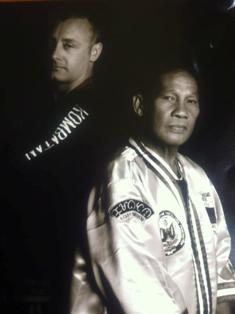 | 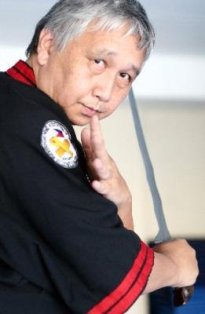 |
| Master Kurt Graham (New Zealand) with GGM Ernesto A. Presas(R.I.P.). | Grandmaster Alex France. Dumaguete, Negros Oriental, Philippines. |
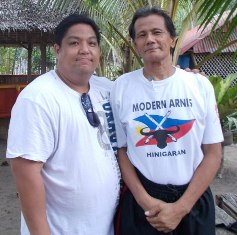 | 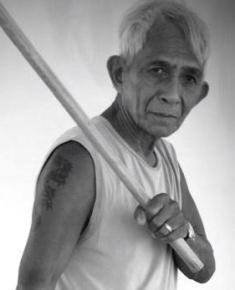 |
| Master Alex Ercia (Laguna/Manila) and Grandmaster Cristino Vasquez (R.I.P.). (Hinigaran, Negros Occidental, Philippines. | Grandmaster Warlito Concepcion(R.I.P.). Cebu City, Cebu, Philippines. |
Modern Arnis De Mano - Presas Style (Kombatan Arnis) is a Filipino martial arts system. The head and founder of the system is Great Grandmaster A. Ernesto Presas Sr.
Kapatiran Mandirigma's loyalties are to GGM Ernesto A. Presas Sr.
We have been direct students of GGM Ernesto A. Presas Sr. since 1993 and now follow the tutelage and mentorship of GM Alex France, GM Lito Concepcion, Master Kurt Graham and Master Alex Ercia.
We (Kapatiran Mandirigma) are not a part of any Kombatan splinter organization, or under any Chief Instructors in the United States or Pan- America. As agreed upon with the Presas family, we will continue to propogate and promote Kombatan Arnis / Modern Arnis de Mano in our own way, while still paying homage to our teacher, GGM Ernesto A. Presas Sr.
We also respect the Manongs (elders) of Kombatan that have been loyal to GM Presas since before I joined.
In the States, Kuya Joey Paman and the others in the San Francisco/Valejo area.
In the Philippines, GM Alex France, GM Roberto Presas, GM Cristino Vasquez, GM Pepe Yap, Master Alex Ercia, Master Ed Kawada, Master Mark Santos and GM Zimba Maalat.
In New Zealand, Master Kurt Graham, my friend, my pare.
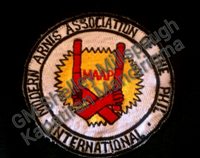 | 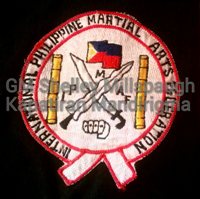 |
Ernesto A. Presas Sr. --------------------------------------------------
Ernesto A. Presas Sr. was born in the coastal town of Hinigaran, Negros Occidental on 1945-05-20. At age 8 he began his martial arts training under his father, Jose Presas, a well known escrima practitioner at that time. He went on to be an athlete in his college years, participating in various sports. His training in the martial arts is eclectic, having studied judo, jujutsu, karate, and various forms of Filipino and Japanese weaponry. He is currently a Lakan Sampu (10th Dan) in Arnis and Mano Mano (hand to hand combat) and holds a Lakan Walo (8th Dan) in Philippine Weaponry.
Remy and Ernesto Presas both recognized that the classical arts of their country were losing their appeal and therefore slowly dying. Both sought to modernize the native arts into an effective fighting system that would be appealing to martial arts students living in modern Filipino society. Their dream to re-introduce his native arts led to the development of Modern Arnis. Ernesto Presas would later re-christen his version of the art,
Kombatan Arnis - Presas Style.
In 1970 he began to teach the Filipino martial arts in the University of the Philippines and Lyceum of the Philippines. Later other classes expanded to the University of Santo Tomas, Central Colleges of the Philippines, the Far Eastern Military Academy, Philippine National Police Academy and the Philippines Air Force Officer's School. Also in 1970 he was invited to Japan at Expo '70' to demonstrate Arnis. He quickly earned the respect of many of the Japanese masters who called his Art Filipino Kendo. After returning home, with the help of his friend Frederico Lazo, he opened his first club. Later he formed the Modern Arnis Association of the Philippines International and the ARJUKEN (which stands for Arnis, Jujutsu, Kendo) Karate Association to formally spread the art within the Philippines. In 1975 he founded the International Philippine Martial Arts Federation (IPMAF) and began to spread the Filipino art to the outside world. In time his Arnis Presas Style and techniques became widely accepted and adopted by countries in Europe, the United States, Canada, Mexico, Australia, New Zealand, South Africa, Saudi Arabia and Puerto Rico. He has also published numerous books and videos and has been featured on the cover of Inside Kung Fu magazine with the title "Ernesto Presas: The Father of Mano-Mano" (which art he created).
Ernesto Presas traveled the world teaching seminars to spread his art. Many visited the Philippines to take lessons from him in Manila.
The art of Modern Arnis De Mano - Presas Style
(Kombatan Arnis) ------------------------
Kombatan combines several classical and modern styles. The student learns several different approaches to different attacks. Drills, that improve the reflexes and reactions of students, are very important in training of Kombatan.
Usually the first thing that is taught in martial arts, are techniques from a specific stance. On one hand, this helps learning but on the other hand, studying this way requires years of practice to be able to use these techniques in free fight.
Unlike in many Asian martial arts, students of Kombatan learn first to use weapons and defend themselves against them. This philosophy is widely based on Filipino culture, where both women and men use swords and knives in their daily work. This is why it is more popular to defend oneself using a weapon than without it. Training with sticks is also safer than training without them (when training without weapons, strikes and kicks are performed on the body). When the student learns to defend him/herself against a weapon, it is easier to learn to defend oneself against an unarmed opponent.
Kombatan includes hand and weapon techniques. Empty hand techniques are based on the paths of the weapons. The weapon is only an extension of the hand. Kombatan combines several different martial arts and it focuses on reacting instinctively. It is ”an art within an art”.
Kombatan is based on 12 attack angles. These angles have 12 basic ways of counterattack (with feet, hands or weapons). The students learn several different strikes, kicks and blocks, locks, grapplings, sweeps, throws and takedowns, blocks, counterattacks and disarms with weapons, armed and unarmed sparring, unarmed vs. armed, armed vs. unarmed styles, footwork, solo and doble baston drills as well as solo and doble baston sparring and combinations.
Kombatan is especially suitable for today’s busy adults, who wish to learn a classical martial art, which teaches real and valuable self-defence skills. As a result of years of studying and developing, the most effective techniques and strategies have been implemented into Kombatan. Our goal is to provide students an effective self-defense system. Kombatan is based on self-defence techniques and their practicality. Weapons are used only as an extension of the hand.
Advantages of Kombatan
1. Effective and realistic self-defense system, which combines all the sparring styles - unarmed, ground and weapon techniques
2. Students learn to move fluently - not respond to force with force
3. Students are encouraged to apply the techniques and sparring style suitable for themselves
4. Teaches to relax when training
5. Improves coordination - training develops ambidexterity
6. Effective workout
7. Improves reflexes and observation - students learn evasive movement, controlling and neutralizing the opponent
8. Increases confidence, self-esteem, character strength and peace of mind.
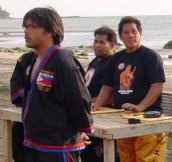
GM Shelley giving a speech to the newly promoted students at the IPMAF Training Camp in Hinigaran, Philippines in 2005.
